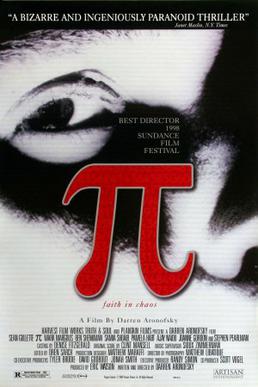The initial Promethean enlightenment philosophy was radical; it has now become the status quo. As Crowley described, the spread of even the best ideas will grow batches of charlatans who have poor understanding and merely preach the faith, in this case the faith of no-faith -- a rising form of pseudoskepticism whose dogma is based on an assumption of stasis in science that is in of itself illusory and self-contradictory.
Whenever you depart from the radical -- the quick progression of ideas, and the violent changes both mental and environmental that come with it -- you become an institution and furthermore static. An organization that has calcified can no longer be radical, and that which was once dangerously progressive has become conservative and reactionary. This is the heart of my understanding of progress -- that it leaves any snapshot of itself quickly in the dust. Neal Stephenson had a nice geological metaphor for it in In The Beginning... Was The Command Line. The point stands that those who marry the spirit of their age soon become widowers -- or, in many cases, far worse: they become the delusional Norman Bates, married to the corpse of the culture that birthed them and willing to kill those who dare endanger their warped rear-view mirror.
How could this have happened? The age of reason has been declared far too soon -- but Voltaire failed to realize that perhaps the thing holding Reason back was the very worship of Reason. Early enlightenment thinking was agnostic -- thank Jefferson for the way that was passed on into early United States legislation, and by extension many of the similar documents that were modeled after it. Over time, though, the twin cores of Prometheanism -- "Nobody knows" and "Let's find out" -- were separated. The former was largely the victim of the ever-present human ego, which appears to be the largest factor (outside of a tendency for baldness and a terribly acrobatic vocal tract) separating us from the other apes; we forteans and other beautiful mutants were by and large the takers of agnosis, since it scares even the most forward-thinking of those who prefer to live in the past and tends to be considered a sign of weakness by the ones who still think throwing shit is a good way to solve problems (some shit is written, some is spoken, some is lead, and now we also have nuclear shit -- the purpose remains the same, though: put it down to lay claim to territory, and throw it at whoever dares trespass). The latter was pursued doubletime, but was somewhat useless in many cases seeing as people tend to get supporting evidence for things they already know, regardless of whether or not it is true -- it was perhaps a mismeasure of man to assume he could be objective.
Well, now that the clergy is firmly in place and the pious populous is supporting the saints and the cardinals, we can firmly expect the heretics and the theologians (which set contains the other?) to be locked up in monasteries. Perhaps a new hermeticism is needed; an alchemy of revolutionary agnosticism where reason is more tempered. We all know that when the village is global, everyone in the monastery and the trivium alike will pick the short line -- a socially constructed reality, enforced by faith: the faith that we have no faith, and need none, and that our work will lead to the elimination of faith and agnosis alike.
Hey, Mister Architect: You're number one!
What creature is the Grinch really? An anatomist explains
-
submitted by /u/StemCellPirate
[link] [comments]
59 minutes ago





















